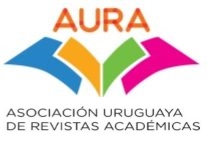Bacteriological and parasitological findings in a rhea slaughter (Rhea americana)
Keywords:
Ñandú (Rhea americana), Public health, Salmonella, Mycobacterium, ParasitesAbstract
The result of pathologic findings in 158 ñandúes slaughtered under official supervision in presented. Swabs from 40% of the birds were obtained from intestinal tracts and gall bladders. Salmonella newport was isolated from them. Six livers were selected, three of them with granulomatous lesions. They were sent to the Tuberculosis Laboratory in the DILAVE "Miguel C. Rubino". The samples were decontaminated and inoculated in selective media. A sample from each of the growing colonies was stained with Ziehl-Neelsen and biochemical and cultural tests were done for identification with the Runyon method. In three samples of them granulomatous lesions were present. In five of them Mycobacterium were observed through Acid-fast positive smears. Four samples were positive to Mycobacterium avium and in one of them M. intracellulare was isolated too. From 17 complete intestinal tracks sent to the Parasitology Department (FV) the following helminthes were found: Deletrocephalus dimidiatus, Monoecocestus sp. and an unidestified cestoda. From feathers a louse identified as Struthiolipeurus sp. was found. Because of the importance of the bacteriological findings for public health, special care must be taken in the future during the rearing period and during slaughter to avoid risks. Also, the recorded parasites rise the necessity of their control during rearing.











